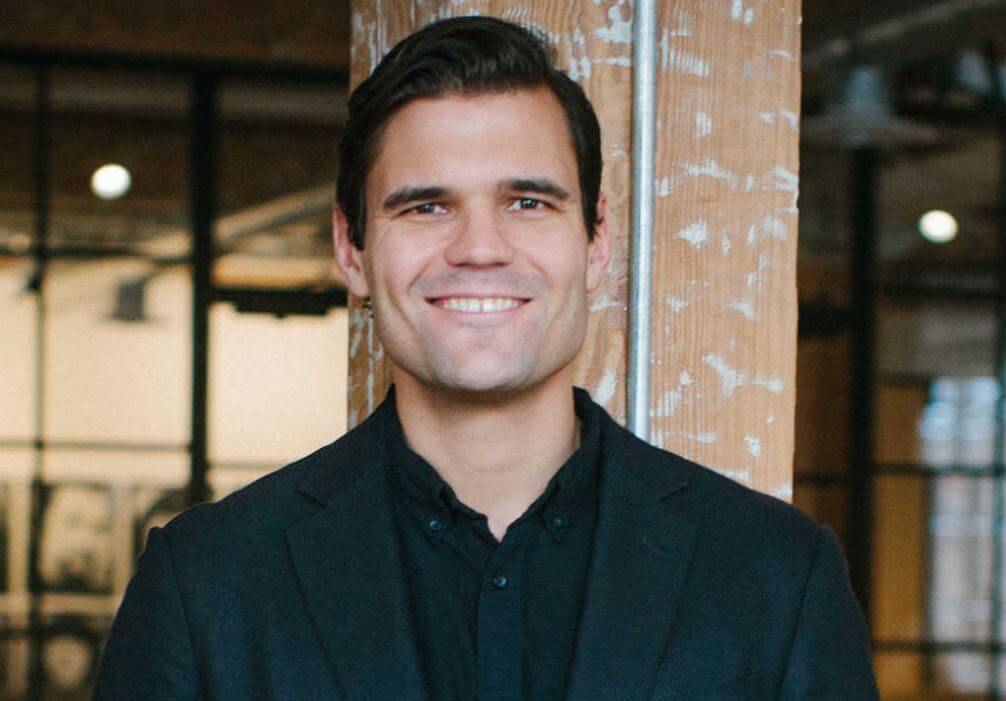The Conundrums of Regulated and Unregulated Blockchains

Blockchain as a concept and technology continues to generate controversies because its fundamentals have the propensity of stripping away traditional elements intrinsic to various sectors. What blockchain proposes are sets of unique solutions to security, monopoly, centralization, and much more. The sheer possibility of creating strictly user-centric products connotes a shift from business models that currently concentrate power to a selected few.
While this is perhaps the most compelling use case of blockchain, the threat it poses to the world order has recently spurred new iterations intended in some cases to dilute the very essence of the technology. Today, authorities prefer a centralized approach to distributed ledger technology and would even use regulations to validate their quest. In this article, I will take a look at the various iterations of blockchains and the implications of regulated and unregulated blockchain networks.
Blockchain 101

Blockchain is the underlying infrastructure powering cryptocurrency. The innovative components of these technologies introduce new governance mechanisms that allow networks to establish and run decentralized ecosystems and applications. The main goal is to eliminate the inputs of intermediaries in all of the processes involved in core operations. Although this objective seems straightforward, the monumental presence of centralized models of governance in traditional systems makes it an uphill task. Institutions and governments have profited off these flawed systems for a long time, and it will take almost a miracle for a single technology and a few well-meaning individuals to change the narrative.
Although permissionless blockchains have, for a while, led the crypto adoption campaign, the latest developments in the industry points to a more regulated future. Entities are pushing for more controlled blockchain environments where the governance and operation of the network are subjugated to a selected few. By so doing, decentralization is not a function of such platforms. In other words, permissioned blockchains retain all of the functionalities of the technology except decentralization.
On the positive side, investors or users have little to worry about, unlike when they interact or invest in the volatile and often risky ventures attributed to decentralized blockchains. In a recent article, James Jorner explained that the explosion of regulated distributed ledger technologies eliminates some of the uncertainties prevailing in the crypto space. He explained:
“If you had expected to see a wholesome deployment of the blockchain technology even if for non-financial-related fields before now, you did not assume wrongly. What has obtained before the emergence of regulated blockchain technology is a situation where investors are treading with caution. They are skeptical and rightly so at putting their resources into a venture that may come crashing any time as a result of the position of government officials and policymakers. The adoption of regulated blockchains like L3COS and others that will come up swiftly to compete will be based on the fact that it can automate a wide range of operations and cut bureaucratic procedures.”
Decentralization May Not Survive the Spotlight

This development fits into one of my previous arguments articulated in an article titled “Is Mainstream a must for Cryptocurrency?” in it, I wrote:
“For one, many of the censorship-resistant technologies available today have found it difficult to attain mainstream status. This assertion holds for the Tor browser, which avails restriction evasive tools for users looking to access censored contents on the internet. Then there is Bittorrent, which facilitates unrestricted file-sharing services. You will agree that regardless of the importance of both tools to internet users in today’s increasingly regulated online ecosystem, their customer bases still do not come close to those of their centralized competitors. Judging by the inability of these censorship-resistant tools to attain global status, it is safe to say that people still gravitate towards the glossy, flawed, and popular centralized systems. Relating this analogy to the apparent lack of mainstream interest in decentralized cryptocurrencies speaks volumes of the disparity between where the crypto space is today and where enthusiasts believe it is heading.”
This sentiment has somewhat plagued the mainstream campaign. Unlike permissionless cryptocurrencies, centralized ones are looking more likely to achieve mainstream success. People located in developing regions are more invested in the core functionalities of cryptocurrency and not just the speculative side of it:
“Then there is the threat that decentralization poses to traditional industries or economies. Crypto offers users an escape from tightly monitored and influenced financial infrastructures. As a result, Bitcoin is more popular in regions with monetary policies, which encourage the government to tighten its grip around the country’s financial systems. Also, there is an apparent increase in the volume of crypto activities recorded in countries that are reeling from the full effect of a financial crisis resulting from sanctions or poor economic policies. People who have turned to crypto, because of one of the two case studies mentioned above, are perhaps the major beneficiary of Satoshi’s promised financial freedom. These sets of people have joined the crypto space out of the burning necessity to survive an inconvenient situation. On the other hand, participants located in thriving economies might never come to see crypto for what it is. They joined the crypto bandwagon out of curiosity or because they want to diversify their portfolios.”
The Blockchain Turf Wars
Already, the world is drifting towards banks-enabled digital assets, thanks to China’s decision to speed up its plans to implement its CBDC. Subsequently, the United States has implied that it may consider doing the same. The success of either of these implementations will determine how fast crypto will become a mainstream concept. However, it is crucial to note that a race for dominance in the blockchain and crypto landscape has begun. The realization that China’s latest blockchain project could sway the pendulum in its favor has suddenly spurred other nations to follow suit. In light of this, experts have explored the implication of the crypto market dynamics and how developed nations are pulling the string in the background.
The co-founder of Ripple, Chris Larsen made this known in an opinion piece when he argued that the United States needs to do more to establish itself in the blockchain scene. He wrote:

The co-founder of Ripple, Chris Larsen
“China is playing the long game with a series of strategic moves that should make the U.S. paranoid about maintaining our lead. It has already achieved near universal use of digital payments domestically through financial tech giants such as Alipay and WeChat, and it is on the cusp of issuing a state-controlled digital currency — the digital Yuan. The Chinese government is also subsidizing the vast amounts of energy needed to fuel cryptocurrency “miners” in the country. Mining is one way to verify blockchain transactions where individuals or companies solve complex mathematical problems for crypto in return. At least 65 percent of cryptocurrency mining is concentrated in China, which means the Chinese government has the majority needed to wield control over those protocols and can effectively block or reverse transactions.”
In an interview with Cointelegraph, Alex Tapscott, co-author of the book Blockchain Revolution, expressed the same sentiment regarding the blockchain turf war between the United States and China. He stated:

Alex Tapscott, co-author of the book Blockchain Revolution
“China is on the brink of launching its own digital currency while, at least on this issue, the United States is dragging its feet. The two visions for these central bank digital currencies (CBDCs) couldn’t be more different. Whereas the U.S. wants to protect the U.S. dollar as global reserve currency, China wishes to export its own economic model around the world and tighten control at home.”
It is safe to say that the success of any of the CBDCs or bank-backed crypto assets slated to launch in the next couple of years could hurt the market visibility of the likes of Bitcoin. The question is: Will users opt for the less technical and risk-free cryptocurrencies as opposed to those perceived as wildcards. If the arguments highlighted at the beginning of this article is anything to go by, then there is every reason to believe that bitcoin and other decentralized alternatives might find themselves at the receiving end.
DeFi To the Rescue?
The only way decentralization blockchains can survive this shift in market dynamics is if more improved and viable applications come to the fore. Notice how the innovative opportunities available in the DeFI landscape has been the major success story of the crypto industry in the last few months. The wide array of use cases of decentralized technology in the financial sector is the precursor of the ongoing DeFi renaissance. Being able to access financial instruments and enjoy quality banking services are compelling enough to ensure that decentralization remains an integral element of the crypto landscape. While this is a given, there are chances that the DeFi market is somewhat experiencing a drought in terms of innovation.
Johnson Xu, the head of research at TokenInsight, expressed his concerns over the apparent lack of ingenuity in the DeFI ecosystem. He noted:

Johnson Xu, the head of research at TokenInsight
“In the short term, the high-interest rate and the incentivized liquidity mining mechanism has created a hype in the space, which directly pushes up the DeFi market, resulting in a speculative push in the DeFi space. Without any further applications and use cases to be created in order to accrue meaningful value within the space, we believe the recent DeFi hype could be short-lived.”
Another threat is that we are yet to fully grasp the risks associated with some of the models heavily adopted in the market. Vadim Koleoshkin, the chief operating officer of Zerion, reiterated this sentiment when he explained that there are different levels of complexities involved in the operations of DeFi protocols. He asserted:

Vadim Koleoshkin, the chief operating officer of Zerion
“Lending is one of the easiest to understand financial instruments in the DeFi space. It promises to earn passive income on your assets protected by the collateral of debtors. Other products like AMM pools (Uniswap, Balancer, Mooniswap, Bancor), trading strategies (TokenSets, Melonport) or yield farming all have way more risks associated with both market conditions and complex smart contracts. However, even lending may not be 100% secure.”
Besides, Vitalik Buterin, while noting that he is uncomfortable with some of the liquidity mechanisms utilized in the DeFi landscape, compared DeFi tokenomics to central banks’ approach to monetary policies. He tweeted:
“Seriously, the sheer volume of coins that needs to be printed nonstop to pay liquidity providers in these 50-100%/year yield farming regimes makes major national central banks look like they’re all run by Ron Paul.”
In response to this assessment, one Twitter user went as far as to call yield farming a giant Ponzi scheme:
“Yield farming at this point is just a giant Ponzi scheme. Someone forks a well-established project, makes minimal changes, gives it a funny name. Some insiders farm a large amount of coins, shill it on social media, and dump it on naive investors at massively inflated prices.”
However, let us not forget that this crypto sector is still in its infancy, and it will undergo several changes before stakeholders finally find the perfect system for decentralized finance. Koleoshkin aptly summarizes the present state of the market when he stated:
“The whole market is a playground for financial geeks who are way more comfortable to manage their wealth on their own rather than open a brokerage account. Still, the DeFi space is very fragmented, and there are many gaps in the market infrastructure that increase development and maintenance costs.”
Regardless of these uncertainties, it is worth mentioning that DeFI is perhaps permissionless blockchain’s only hope of commanding a similar level of successes projected for centralized digital assets. Nonetheless, when it comes to regulations as it relates to cryptocurrency and blockchain, there are still lots of issues to iron out. A majority of regulators are yet to implement robust frameworks for cryptocurrency and blockchain. Also, it is vital to clarify the laws that apply to blockchain infrastructures available globally. Notice how Telegram halted its blockchain project because it was termed illegal in the United States. As implied by Hester Peirce, situations like this are a little bit confusing:
“We were applying our law because there were some U.S. purchasers and there was some U.S. involvement, but a lot of the activity was outside the United States and so that made me even more concerned because then you’re using U.S. securities laws to stop a project that is partly happening in the U.S. but partly happening elsewhere.”
